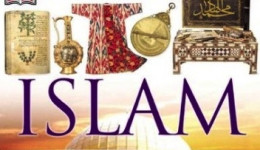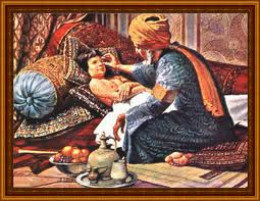 |
| Great Muslim Inventors and Inventions |
Muslims believe that Allah sent about 125000 prophets in this world to give guidance to humanity. All the inventions and achievements that we see in today’s world is the result of the knowledge provided by these prophets which actually was given by Allah in form of revelations.
Some of the inventions mentioned below shows how ideas from Muslim civilisation have influenced the world.

Muslims were the first farmers who raised the finest sheep and cultivated the best crops and vegetable. They successfully dealt with insect pests, used fertilizers, and were skilled at grafting trees and crossing plants to yield new varieties. It was through their efforts that farms that had been yielding one crop per yearly started yielding three or more crops in succession.
An important mechanical invention in the history was the crankshaft. This was created by a Muslim engineer called al-Jazari to raise water for irrigation. He also invented valves, pistons and some of the first mechanical clocks operated by water and weights. Another Muslim mathematician, astronomer and physicist Ibn al-Haitham during the 10th-century realised that light enters the eye instead of leaving it and invented the first pin-hole camera after noticing the way light came through a hole in window shutters. Using this theory that better picture is the result of smaller hole, he set up the first Camera Obscura. This is derived from the Arab word qamara which means a dark or private room. He is also credited for being the first man to move physics from a philosophical activity to an experimental one.
Mohammad Al Khwarazmi one of the most influential Muslim also known as “the father of algebra" was the first to demonstrate the concept of exponents for unknown variables. He demonstrated the use of equations, algebraic multiplication and division, and measuring area. Algebra was named after al-Khwarizmi's book, Al-Jabr wa-al-Muqabilah. Another great Islamic mathematician was Al Battani. He contributed greatly in trigonometry. Muslims used variables before any other civilization. The high degree of skill in mathematics led to many other innovations in astronomy, cartography, surveying and engineering, commerce, art, and architecture. The top known contribution by early Muslim mathematicians was the concept of zero.
Another contribution Muslims made was their architecture. Domes, towers luxurious spas were all very popular in Muslim civilisation in the 10th century. The most famous building Taj Mahal which is considered one of the eight wonders of the world was constructed by a famous Muslim architect Ustad “Isa". The minaret a very important feature of Islamic architecture and was being built from ancient times. The tallest minaret built in 12th century was the Qutub Minar. This is even today the tallest brick and stone minaret in the world.

The prediction of the sighting of the Moon for Ramadan paved ways to progress greatly in astronomy. The first large-scale observatory in the Muslim world was that built by Sultan Malikshah in Isfahan in the late 11th century. Al-Zarqali, a mathematician and astronomer in the 11th century made various instruments for the study of astronomy and built a famous water clock that could tell the hours of the day and night, and the days of the lunar month. He also contributed to the famous Toledan Tables of astronomical data, and published an almanac that linked the days of the month on different calendars, showed the placement of the planets, and predicted solar and lunar eclipses. Another prominent mathematician and astronomer in Seville was al-Bitruji who developed a theory of the movement of stars. Taqi al-Din an astronomer in the 16thcentury set up huge types of star-gazing tools like quadrants and sextants, to increase the accurateness of measurements made in his observatory.
Many surgical instruments similar to those which are now used were devised in the 10th century by a Muslim surgeon called al-Zahrawi. He was also the first person to find out that cat gut used for internal stitches dissolves away by itself and that it can also be used to make medicine capsules. In the 13th century, another Muslim medic named Ibn Nafis explained the circulation of the blood. Muslims doctors also invented anaesthetics of opium and alcohol mixes and developed hollow needles to pull cataracts from eyes. Children in Turkey were vaccinated for smallpox at least 50 years before the West discovered it. Many hospitals were built during the early Islamic era and the practice of surgery was also expanded. Important medical thinkers and physicians of Islam, Al-Razi and Ibn Sina contributed a lot in this field and their knowledge on medicine was recorded in books that were significant in medical schools throughout Muslim history.

Coffee, schools, Chess game, soap, perfumes, alcoholic spirits, sulphuric and nitric acid, the fountain pen,three-course meal, carpets, cheque, gardens, flying machine, toothbrush, Islamic coins, kerosene fuel, paper and maps, are few other surprising inventions by Muslim innovative thinkers.







0 comments:
Post a Comment